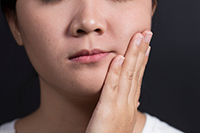South Ogden
What to Do as Soon as You Notice Bleeding Gums
Pretty much everyone knows that gum disease can lead to horrible outcomes such as missing teeth, jawbone deterioration, and even increased chances of infection elsewhere in the body. In some cases, it could even end up contributing to the development of lung cancer!
However, many people are unaware of the beginning signs of gum disease. Here is more information about recognizing this condition in its early stages, and preventing things from getting worse.

Early Gum Disease
The easiest way to check for early stage gum disease is to brush and floss your teeth. If you do this and notice that your gum tissue is bleeding or appears swollen and red, you have the beginnings of gum disease.
You should not think that the absence of pain or discomfort means that you don’t have gum disease. Many people with it—at least in the early stages—have no discomfort at all. The same goes for swollen or reddened gum tissue: these symptoms can indicate gum disease, but their absence does not mean you do not have it.
Treating Early Stage Gum Disease
The good news is that, at this stage, gum disease is pretty easy to treat. The first thing you need to do is start brushing your teeth at least twice each day. In addition, you need to floss at least once a day. These two things in and of themselves may be sufficient to reverse the progression of the gum disease.
Once you have started diligently cleaning your teeth on a regular basis, the next step is to talk with us. We may have a few other ideas for you to consider. Whatever you do, don’t hope that you can just ignore the problem and make it go away. This approach never works, and in fact only contributes to more problems down the road.
